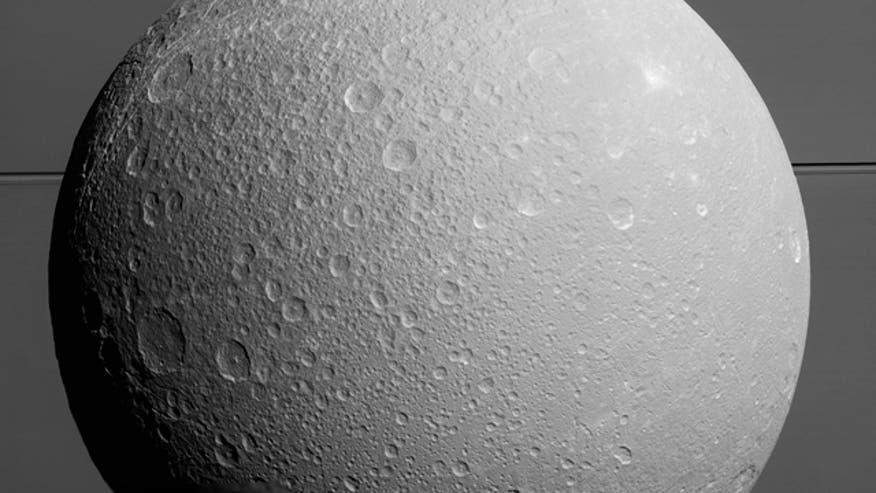MULTIZ321
TUG Member
- Joined
- Jun 6, 2005
- Messages
- 31,345
- Reaction score
- 9,013
- Points
- 1,048
- Location
- FT. LAUDERDALE, FL
- Resorts Owned
-
BLUEWATER BY SPINNAKER HHI
ROYAL HOLIDAY CLUB RHC (POINTS)
Cassini Buzzes Saturn's Moon Dione For the Last Time - by Mike Branom/ Viva Space/ TheDailyBeast.com
"As the spacecraft nears the end of its life, it probes the secrets of Saturn's icy moon Dione for a final time.
The Cassini spacecraft has investigated Saturn, its distinctive rings and dozens of moons far longer than the experts at NASA’s Jet Propulsion Laboratory had ever hoped.
But the end of the mission is drawing near—as is the end of Cassini itself—so milestones are taking on a tone of bittersweet nostalgia.
On Monday, Cassini zips past the moon Dione for its final time. Cassini's closest approach, within 295 miles of the icy, crater-pocked surface, will occur at 2:33 p.m. EDT.
“We’ve been there four times before,” Todd Barber, the mission’s lead propulsion engineer, said Friday. “But each flyby helps unlock its mysteries.”
Information gathered by the craft’s package of instruments will be added the trove of data collected since launch in 1997. Cassini reached Saturn, a gas giant 900 million miles from Earth, in 2004..."

NASA
Richard
"As the spacecraft nears the end of its life, it probes the secrets of Saturn's icy moon Dione for a final time.
The Cassini spacecraft has investigated Saturn, its distinctive rings and dozens of moons far longer than the experts at NASA’s Jet Propulsion Laboratory had ever hoped.
But the end of the mission is drawing near—as is the end of Cassini itself—so milestones are taking on a tone of bittersweet nostalgia.
On Monday, Cassini zips past the moon Dione for its final time. Cassini's closest approach, within 295 miles of the icy, crater-pocked surface, will occur at 2:33 p.m. EDT.
“We’ve been there four times before,” Todd Barber, the mission’s lead propulsion engineer, said Friday. “But each flyby helps unlock its mysteries.”
Information gathered by the craft’s package of instruments will be added the trove of data collected since launch in 1997. Cassini reached Saturn, a gas giant 900 million miles from Earth, in 2004..."

NASA
Richard


